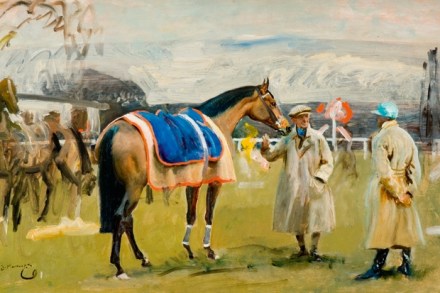At last Alfred Munnings is being taken seriously again
Sir Alfred Munnings (1878–1959) did himself a grave and lasting disservice when he publicly attacked modern art in a bibulous after-dinner speech at the Royal Academy in 1949. He had been president of the RA for five years, pipping Augustus John to the post, but the controversy he stirred up (he called Picasso and Matisse ‘foolish daubers’) led to his resignation. The echoes of his rant linger on more than half-a-century later, constituting for many the most memorable thing about him. Like Canute, Munnings could not stem the tide, and Modernism for a time swamped and eroded his reputation. Now, as people begin to look at his work again, his
















